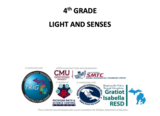
lesson where students create a model of light and how things are seen (Weebly)
- Subject:
- Science
- Material Type:
- Lesson
- Provider:
- Jordan School District
- Date Added:
- 10/24/2021

lesson where students create a model of light and how things are seen (Weebly)
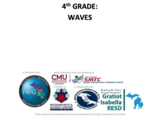
lesson on wave properties. This also covers UT.SEEd.4.3.3 (Weebly)

Students will be able to list the 5 measures of fitness, describe them, and give at least two examples for each. They will practice/attempt the examples.

Students will be able to identify and explain the importance of muscular strength and endurance. They will attempt and practice the examples.

Today's kids spend lots of time posting and sharing information online. Learn five surefire ways to protect their privacy.

Unit Summary
This unit on thermal energy transfer begins with students testing whether a new plastic cup sold by a store keeps a drink colder for longer compared to the regular plastic cup that comes free with the drink. Students find that the drink in the regular cup warms up more than the drink in the special cup. This prompts students to identify features of the cups that are different, such as the lid, walls, and hole for the straw, that might explain why one drink warms up more than the other.
Students investigate the different cup features they conjecture are important to explaining the phenomenon, starting with the lid. They model how matter can enter or exit the cup via evaporation However, they find that in a completely closed system, the liquid inside the cup still changes temperature. This motivates the need to trace the transfer of energy into the drink as it warms up. Through a series of lab investigations and simulations, students find that there are two ways to transfer energy into the drink: (1) the absorption of light and (2) thermal energy from the warmer air around the drink. They are then challenged to design their own drink container that can perform as well as the store-bought container, following a set of design criteria and constraints.
This unit builds toward the following NGSS Performance Expectations (PEs) as described in the OpenSciEd Scope & Sequence: MS-PS1-4*, MS-PS3-3, MS-PS3-4, MS-PS3-5, MS-PS4-2*, MS-ETS1-4. The OpenSciEd units are designed for hands-on learning and therefore materials are necessary to teach the unit. These materials can be purchased as science kits or assembled using the kit material list.
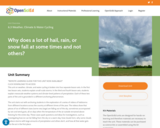
The goals of OpenSciEd are to ensure any science teacher, anywhere, can access and download freely available, high quality, locally adaptable full-course materials. REMOTE LEARNING GUIDE FOR THIS UNIT NOW AVAILABLE!
This unit on weather, climate, and water cycling is broken into four separate lesson sets. In the first two lesson sets, students explain small-scale storms. In the third and fourth lesson sets, students explain mesoscale weather systems and climate-level patterns of precipitation. Each of these two parts of the unit is grounded in a different anchoring phenomenon.

A lesson that uses swampy water to determine interactions (Wisconsin)
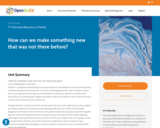
To pique students’ curiosity and anchor the learning for the unit in the visible and concrete, students start with an experience of observing and analyzing a bath bomb as it fizzes and eventually disappears in the water. Their observations and questions about what is going on drive learning that digs into a series of related phenomena as students iterate and improve their models depicting what happens during chemical reactions. By the end of the unit, students have a firm grasp on how to model simple molecules, know what to look for to determine if chemical reactions have occurred, and apply their knowledge to chemical reactions to show how mass is conserved when atoms are rearranged.

Unit Summary
This unit on metabolic reactions in the human body starts out with students exploring a real case study of a middle-school girl named M’Kenna, who reported some alarming symptoms to her doctor. Her symptoms included an inability to concentrate, headaches, stomach issues when she eats, and a lack of energy for everyday activities and sports that she used to play regularly. She also reported noticeable weight loss over the past few months, in spite of consuming what appeared to be a healthy diet. Her case sparks questions and ideas for investigations around trying to figure out which pathways and processes in M’Kenna’s body might be functioning differently than a healthy system and why.
Students investigate data specific to M’Kenna’s case in the form of doctor’s notes, endoscopy images and reports, growth charts, and micrographs. They also draw from their results from laboratory experiments on the chemical changes involving the processing of food and from digital interactives to explore how food is transported, transformed, stored, and used across different body systems in all people. Through this work of figuring out what is causing M’Kenna’s symptoms, the class discovers what happens to the food we eat after it enters our bodies and how M’Kenna’s different symptoms are connected.
This unit builds towards the following NGSS Performance Expectations (PEs) as described in the OpenSciEd Scope & Sequence: MS-LS1-3, MS-LS1-5, MS-LS1-7, MS-PS1-1, MS-PS1-2. The OpenSciEd units are designed for hands-on learning, and therefore materials are necessary to teach the unit. These materials can be purchased as science kits or assembled using the kit material list.
Additional Unit InformationNext Generation Science Standards Addressed in this UnitPerformance ExpectationsThis unit builds toward the following NGSS Performance Expectations (PEs):
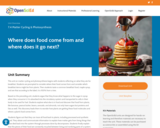
Students figure out that they can trace all food back to plants, including processed and synthetic food. They obtain and communicate information to explain how matter gets from living things that have died back into the system through processes done by decomposers. Students finally explain that the pieces of their food are constantly recycled between living and nonliving parts of a system.
Students will be reading and writing myths. They will follow the structure of short stories and eventually publish their work.
The 7th grade poetry unit gives an in depth approach to poetry involving the four strands within the core. I've included worksheets, rubrics, and answers keys where applicable. I have also used literature examples from the core.

In this lesson, students observe changes in matter and develop models of chemical equations in order to develop a definition for chemical reactions, identify patterns of change that indicate that a chemical reaction has taken place, and explain the relationship between reactants and products at a molecular level. The lesson plan includes an 8-day lesson plan, Google Slides presentation, student reading, and lab/workshop instructions.
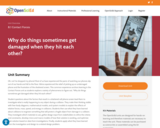
Oh, no! I’ve dropped my phone! Most of us have experienced the panic of watching our phones slip out of our hands and fall to the floor. We’ve experienced the relief of picking up an undamaged phone and the frustration of the shattered screen. This common experience anchors learning in the Contact Forces unit as students explore a variety of phenomena to figure out, “Why do things sometimes get damaged when they hit each other?”
Student questions about the factors that result in a shattered cell phone screen lead them to investigate what is really happening to any object during a collision. They make their thinking visible with free-body diagrams, mathematical models, and system models to explain the effects of relative forces, mass, speed, and energy in collisions. Students then use what they have learned about collisions to engineer something that will protect a fragile object from damage in a collision. They investigate which materials to use, gather design input from stakeholders to refine the criteria and constraints, develop micro and macro models of how their solution is working, and optimize their solution based on data from investigations. Finally, students apply what they have learned from the investigation and design to a related design problem.
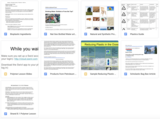
Lesson Description: Students will obtain information and engage in arguments about how the properties of plastics provide structure and function. Students also investigate how chemical reactions create polymers that result in plastics and what natural resources are used in making synthetic materials. This lesson includes a lesson plan, activity/lab instructions, readings, and presentations.

In this lesson, students explore energy transfer in kinetic and potential energy. The lesson includes a lesson plan, concept charts, presentation, and article.
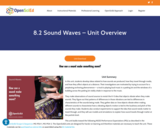
Unit Summary
In this unit, students develop ideas related to how sounds are produced, how they travel through media, and how they affect objects at a distance. Their investigations are motivated by trying to account for a perplexing anchoring phenomenon — a truck is playing loud music in a parking lot and the windows of a building across the parking lot visibly shake in response to the music.
They make observations of sound sources to revisit the K–5 idea that objects vibrate when they make sounds. They figure out that patterns of differences in those vibrations are tied to differences in characteristics of the sounds being made. They gather data on how objects vibrate when making different sounds to characterize how a vibrating object’s motion is tied to the loudness and pitch of the sounds they make. Students also conduct experiments to support the idea that sound needs matter to travel through, and they will use models and simulations to explain how sound travels through matter at the particle level.
This unit builds toward the following NGSS Performance Expectations (PEs) as described in the OpenSciEd Scope & Sequence: MS-PS4-1, MS-PS4-2. The OpenSciEd units are designed for hands-on learning and therefore materials are necessary to teach the unit. These materials can be purchased as science kits or assembled using the kit material list.

By visiting stations and viewing simulations students will develop an understanding of the relationship between wave structure and energy. Students will take this understanding further as they compare how sound and light waves travel noting how they are similar and how they are different. This lesson includes a lesson plan, presentation, and activity instruction cards.

In this lesson students will use investigations to explore why we need oxygen, learning about the process of cellular respiration and photosynthesis. Students will analyze what happens to an ecosystem when photosynthesis and respiration are not balanced. The lesson includes a lesson plan and presentation.